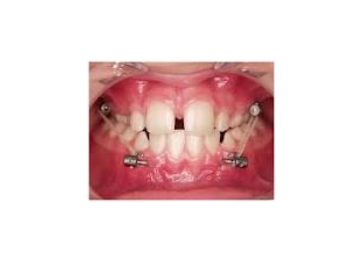The use of the bone anchor
A bone anchor generally (95-98%) remains in place during the treatment. Please follow the surgeon’s advice carefully. In the period of 1-4 weeks after placement of the bone anchor, we will apply some pressure to the bone anchor to help it fuse correctly. During the braces treatment, keep the gums around the bone anchor especially clean, even though this may be challenging, to reduce the chance of infection (and loosening of the anchor). An electric toothbrush is best for keeping teeth clean with braces; however, gently brush the area around the bone anchor with a soft manual toothbrush, at least for the first month. Rinse well with the chlorhexidine for which you will receive a prescription from the oral surgeon.
Removing the bone anchor
After the bone anchor is no longer required, it will be removed or ground down to the bone level.


